Incredible Northern Spain Road Trip: 7-Day Itinerary
Some of the links may be affiliate links, and at no cost to you, I earn a small commission if you make a purchase. I only recommend stuff I love and use, and the income goes back into making this little blog successful!
The wonderful surprise about this 7-day Northern Spain road trip is that the farther west you move from Bilbao to Santiago, the more remote and authentically Spanish it gets. Be prepared for small towns along rocky coastlines, delicious meals of octopus and pintxos in standalone restaurants tucked in the cliffside (nothing fancy, rather deliciously local), and a generally serene and slow, non-connected world.
I spent about a month doing this route in September last year because I like to travel slowly and meet friends along the way. This weeklong, more off-the-beaten-path itinerary is the best of the best stuff that I liked, and it optimizes the drive times so you’re not constantly on the road. Here’s the high-level itinerary:
- 2 Days: Basque Country – Bilbao – Guggenheim Museum – Gaztelugatxeko – San Sebastian
- 2 Days: Asturias – Picos de Europa Hikes – Town of Llanes – Gijon
- 3 Days: Galicia – Playa de las Catedrales – Santiago De Compostela

I would recommend more time in Bilbao, San Sebastian, and the region around Llanes, especially if you’re keen on hiking portions of the Picos de Europa mountains.
Northern Spain Road Trip: Full 7-Day Itinerary
You can land in Madrid or Barcelona and take a connecting flight to Bilbao Airport or San Sebastian Airport (smaller, but services a lot of European airlines). I started in Bilbao, rented a car, and went wild on this itinerary.
DRIVING TIP: Driving from one end of northern Spain to another, from Bilbao to Santiago de Compostela, takes about 6 hours, so nothing on this road trip is too long of a drive when you break it up into 7 days.
Day 1: Bilbao & Guggenheim Museum
Today is about exploring the food scene (tapas and pintxos) of the Basque Region and visiting one of the most famous museums in Spain.
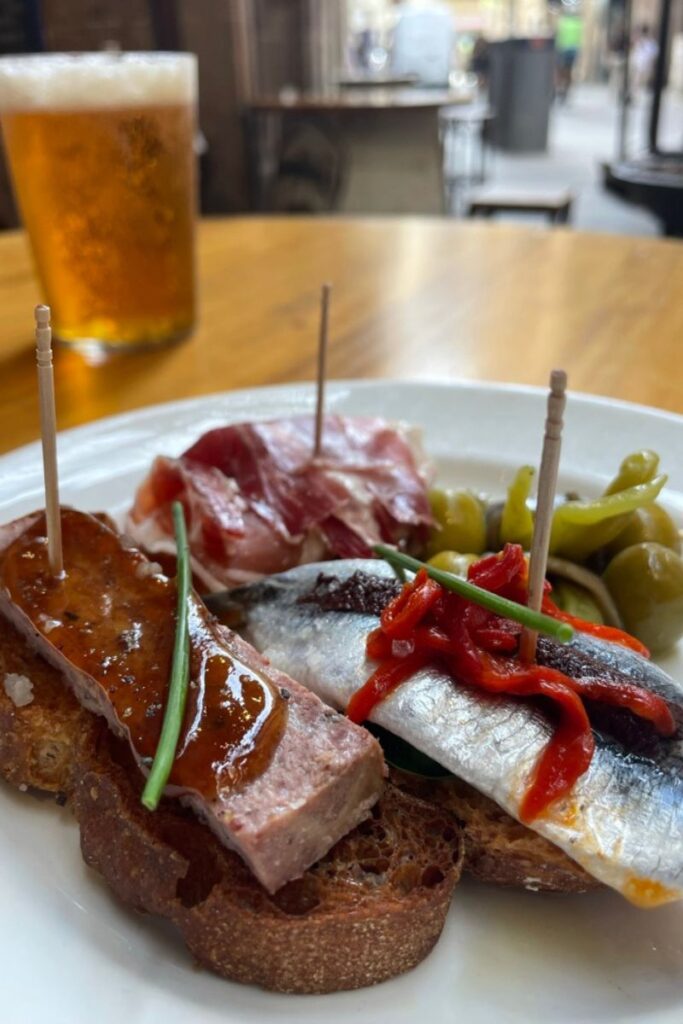
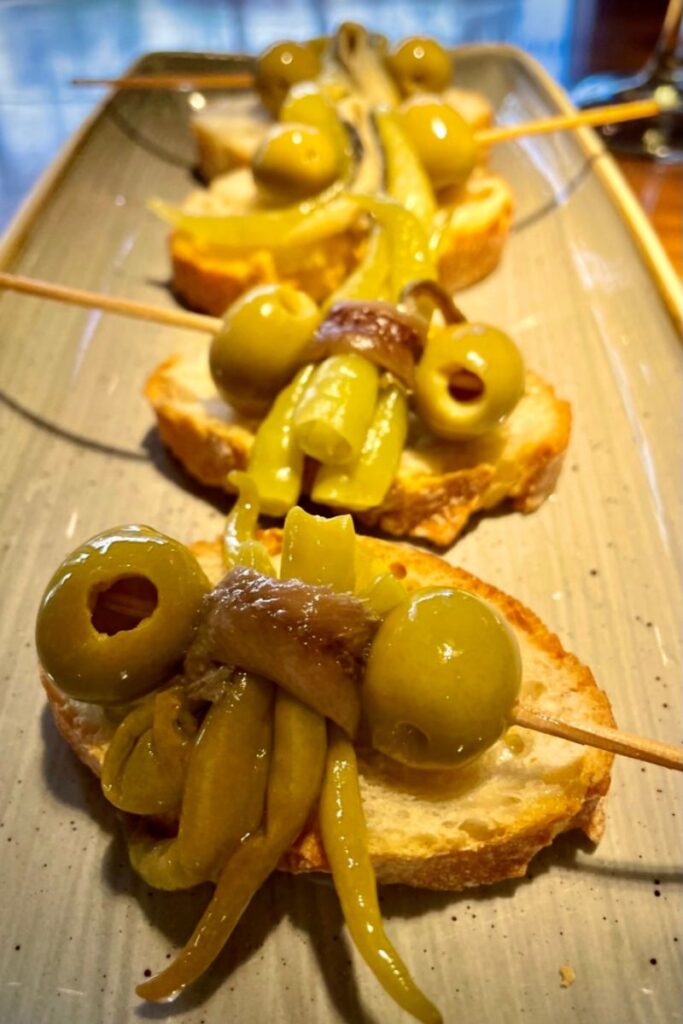
I booked a guided tour because it came recommended by a local friend, and headed towards the big dog built of flowers, where the museum is located. It is one thing to wander the Guggenheim Museum on your own looking at the pretty pieces of art and saying “ooo!”, and it’s another completely to have an art history guru walk you through the context and purpose of each piece and have a discussion around it.
➡️ Book a guided tour, as there’s a lot of context behind the art: Guggenheim Museum Private Tour with Admission. ⬅️
I spent the afternoon walking around and getting acquainted with the vibe of the city. I loved Casilda Iturrizar Park.
You are in the Basque Region now, and it is all about the Pintxos (adorably pronounced “pinch-ohs”), the most intelligent way to eat a variety of foods and not over-stuff yourself. These are small snackies, bites of meats, cheeses, and pickled delicacies on fresh toasty bread.
If it’s a bar-hopping kind of night, start at La Antigua Cigarreria and make your way around the winding streets, grabbing pintxos as you go.
PRO TIP: Order a “Marianito Preparado” and enjoy a super yummy spin on the Italian negroni with Spanish flair!
Day 2: San Sebastian & San Juan de Gaztelugatxeko
Today is a little road trip east to San Sebastian, where the drive is 1.5 hours each way. On the way to San Sebastian, stop at Gaztelugatxeko! I spent a couple of hours on the hillside overlooking the sea and grabbing lunch at the restaurant there.
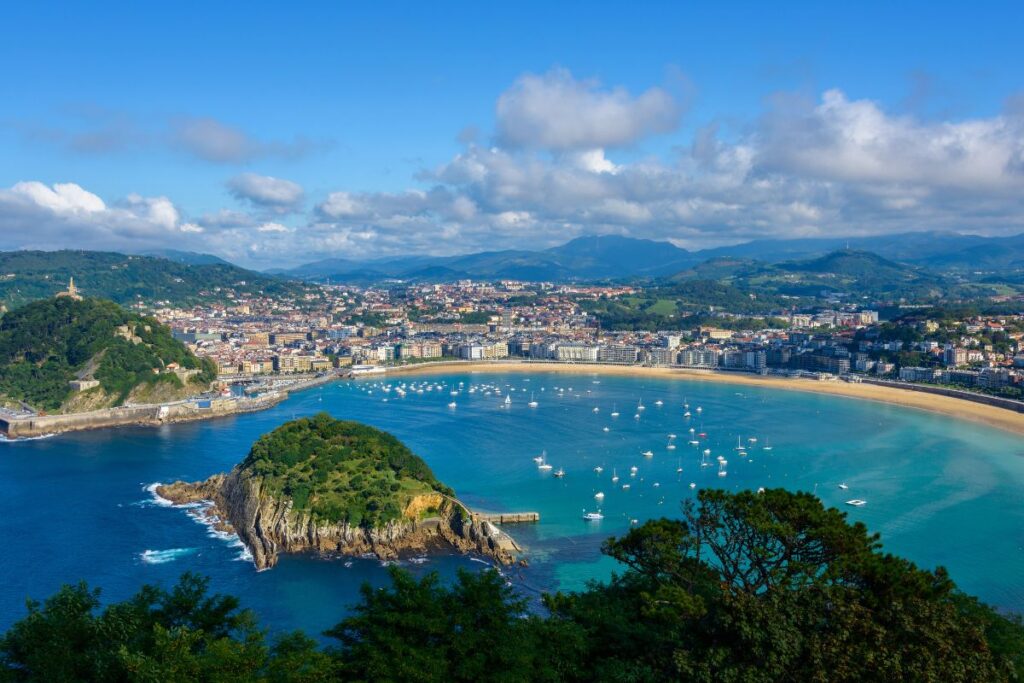
In San Sebastian, here are some of my favorite places to visit:
- La Concha Beach: Renowned for its picturesque bay and fine sands, La Concha is perfect for sunbathing, and enjoying the views.
- Parte Vieja (Old Town): Explore the little streets, filled with historic buildings, busy pintxo bars, and trendy shops.
- Monte Igueldo: Offers panoramic views of the city and coast. Accessible by a funicular, it’s a great spot for photos and lazy walks.
- Miramar Palace: A historic building with beautiful gardens with splendid views over La Concha Bay.
I would make a reservation and grab dinner at one of the many Michelin-rated restaurants in town. To be honest, no matter where you eat, low-key or high-end, know that this is one of the biggest gastronomic towns in Spain, backed by Anthony Bourdain himself. Mornings or late afternoons are best for popular spots to avoid crowds.
For pintxos, visiting during traditional meal times will have you feeling the Spanish vibe. It’s an easy 1-hour, 15-minute drive back to Bilbao afterward.
Day 3: Explore Llanes
A little hidden gem on the northern Spain road trip is the town of Llanes in the mountainous Asturias Region, just 2 hours away from Bilbao. Llanes is known for its beautiful beaches around town, a well-preserved old town with medieval streets, traditional architecture, and the impressive Basílica de Santa María, and the stunning Picos de Europa mountains are nearby, which we are hiking tomorrow.
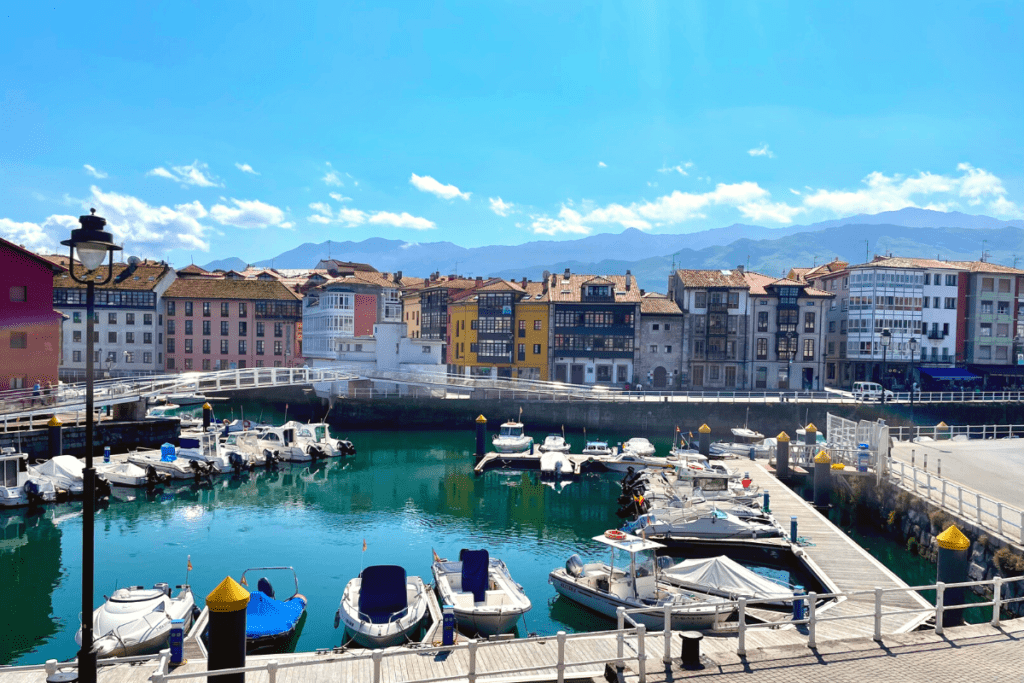
Here are the best things to do in Llanes:
- Playa de Toró: A unique beach known for its peculiar rock formations
- Playa de Gulpiyuri: A hidden and unusual inland beach, set in a meadow and accessible only by foot.
- Cuevas del Mar Beach: A stunning beach known for its natural caves.
- The Historic Center: Stroll through the charming streets, visit the Basilica, and see the ancient defensive tower, Torre de Llanes.
- Paseo de San Pedro: A scenic cliffside walkway with spectacular views of the Cantabrian Sea and the town – I did this after lunch and it was great!
Don’t leave Llanes without sampling the local Asturian cuisine, including fresh seafood, cheeses (like the famous Cabrales), and sidra (cider).
Or grab a bocadillo from the bakery, and head to one of the beaches above. Bocadillos are little sandwiches on fresh baguettes filled with meat (Fuet salami or Jamon Iberico) and a spread (tomato or butter). They are delicious, fresh, and always cheap!
Day 4: Hike the Picos de Europa
You’ve been eating like a little chunk this whole time, so it’s time to hit the trails! Get into the mountains and do a hike in the Picos de Europa.
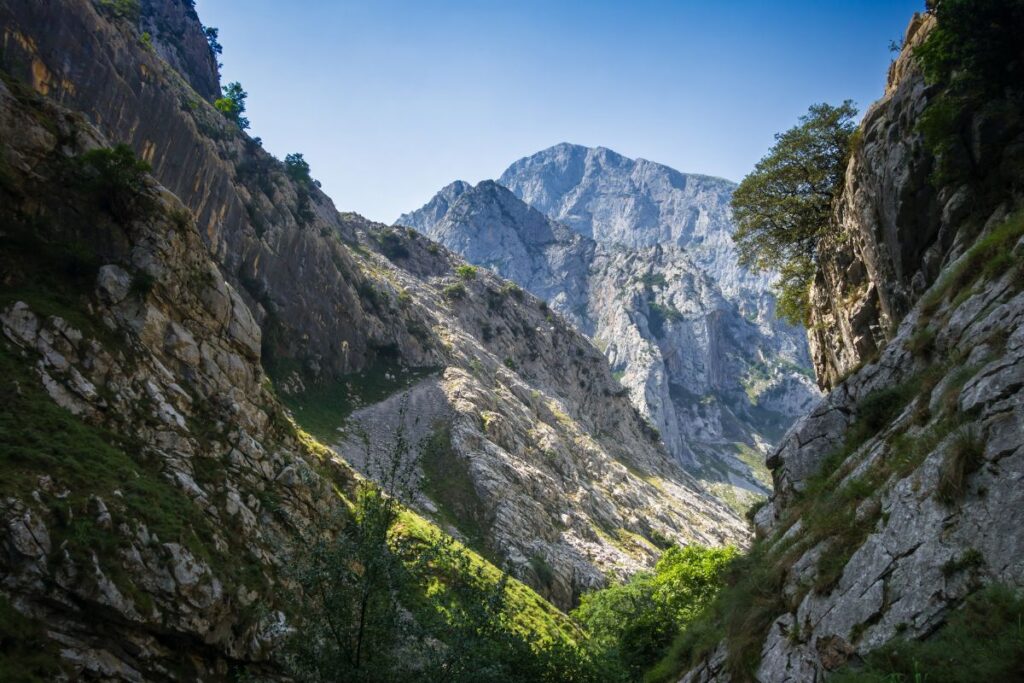
➡️ Book a Guide for a Day Hike in the Picos de Europe Mountains. ⬅️
Either choose your own adventure or grab a professional mountain guide and journey through the Vega del Torro and down to Lake Moneta – this was one of the highlights of my trip.
Here are some AllTrails treks that I also have my eye on for next time:
- Ruta del Cares (Hard, 13 miles): Known as the “Divine Gorge,” this trail is one of the most popular hikes, offering stunning views of the gorges (a shorter, easier alternative).
- Lagos de Covadonga (Hard, 10 miles): This hike includes the famous glacial lakes of Enol and Ercina and offers spectacular mountain views.
- Fuente Dé – Cable Car and Hike (Hard, 4.6 miles): Take the cable car up and hike around the upper parts of the mountains for breathtaking views.
Day 5: Gijon & Playa Madre
The drive from Llanes to the first stop of the day, Playa Madre, is 40 minutes. I spent the morning on Playa Madre, and if you’re up for a little detour drive, this is worth it: Mirador del Fitu. The drive from Playa Madre to Gijon for the afternoon is another 40 minutes
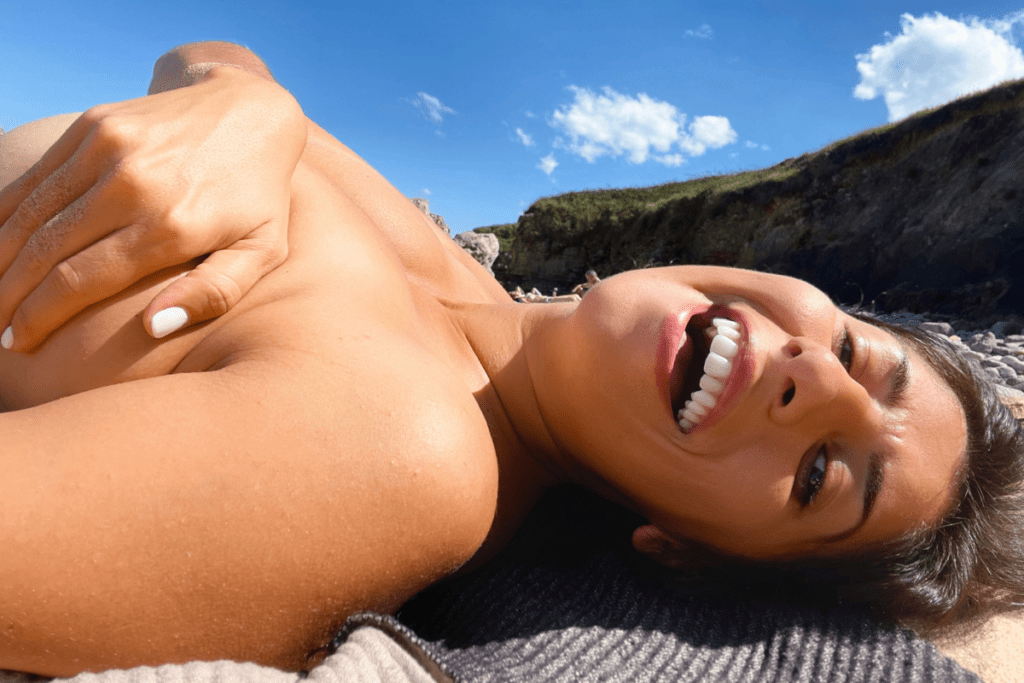
I spent a few lazy days in this cute city just wandering, doing a little shopping, sleeping, and bar hopping. Plenty of brewpubs and delicious restaurants around.
My best advice is to visit a Sidrería to see how cider is poured from a height to aerate it (similar to Turkish tea). I also love walking around Cimavilla, the old fisherman’s quarter, full of narrow streets, colorful houses, and sidrerías (cider bars). I recommend eating your way through Gijon at night, especially fresh seafood and traditional dishes like fabada Asturiana.
Day 6: Playa de las Catedrales
The drive from Gijon to Playa de las Catedrales is 1.5 hours along the coast. After you explore the caves and arches, it’s another 1.5 hours on to Santiago de Compostela, where I made a home base for the last bit of the road trip.

Playa de las Catedrales, or the Beach of the Cathedrals, is a stunning natural wonder located in Galicia, Spain. Known for its awe-inspiring rock formations, this beach is famous for its towering arches and cave-like structures that resemble the buttresses of a cathedral, hence its name.
The beauty of Playa de Las Catedrales is dramatically altered by the tide, so best to visit during the morning. During high tide, it appears just like a regular beach, but low tide reveals the magnificent arches and caves.
➡️ Local Site To Schedule a Time To Visit Playa de Las Catedrales ⬅️
There is also a wooden walkway about 12km long along the coast next to the entrance to the beach and a few local restaurants in the nearby little town of Rinlo – I loved Restaurante a Mirandilla. Go for the baked octopus (pulpo), it’s a specialty of Galicia!
Spend the afternoon making your way to Santiago de Compostela for dinner in the old town. This is where I spent a few days diving into the history around El Camino pilgrimage walk and the Galician culture.
Day 7: Santiago de Compostela
Santiago de Compostela is a destination of its own, not just the end of our road trip. This is where all the pilgrimages and caminos end and the capital of the Galician region. Most, if not all, of Santiago de Compostela’s top tourist attractions are located in the Old Town.
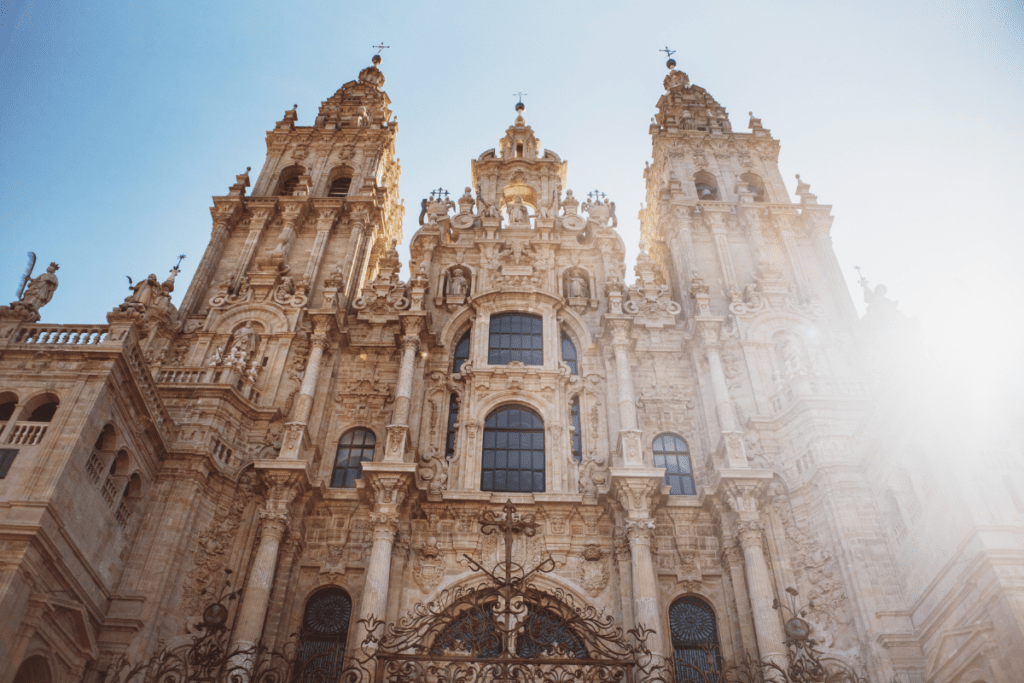
The Santiago de Compostela Cathedral is a ‘holy moly’ sight to see. Looking up at the massive cathedral literally left me as breathless as when I saw the Vatican for the first time. The tomb beneath the cathedral’s main altar is the burial site of St. James, and it’s the final destination of all pilgrimage walks in the region.
FUN FACT: It is just one of three known churches built over the remains of an apostle. The other two are St. Peter’s Basilica in Vatican City and St. Thomas Cathedral Basilica in Chennai, India.
➡️ Grab A Guided Cathedral Tour for more fun facts. It’s super cheap and educational! ⬅️
After the Cathedral tour, walk around the old town and explore the little shops and wine bars. Right around sunset, head into the Parque de Alameda for a walk.
Grab dinner at O Gato Negro and try percebes. Percebes, or “Lucifer’s Fingers”, is a delicacy along the Galician and southern Portuguese coasts. They are nicknamed not just because of their devilish appearance, but because they’re super hard to get. Give it a go – it’s an unusual regional food that you can’t have just anywhere.
Map: Road Trip Through Northern Spain
If you were to drive from one end to another, from Bilbao to Santiago de Compostela, it would take you 6 hours total.
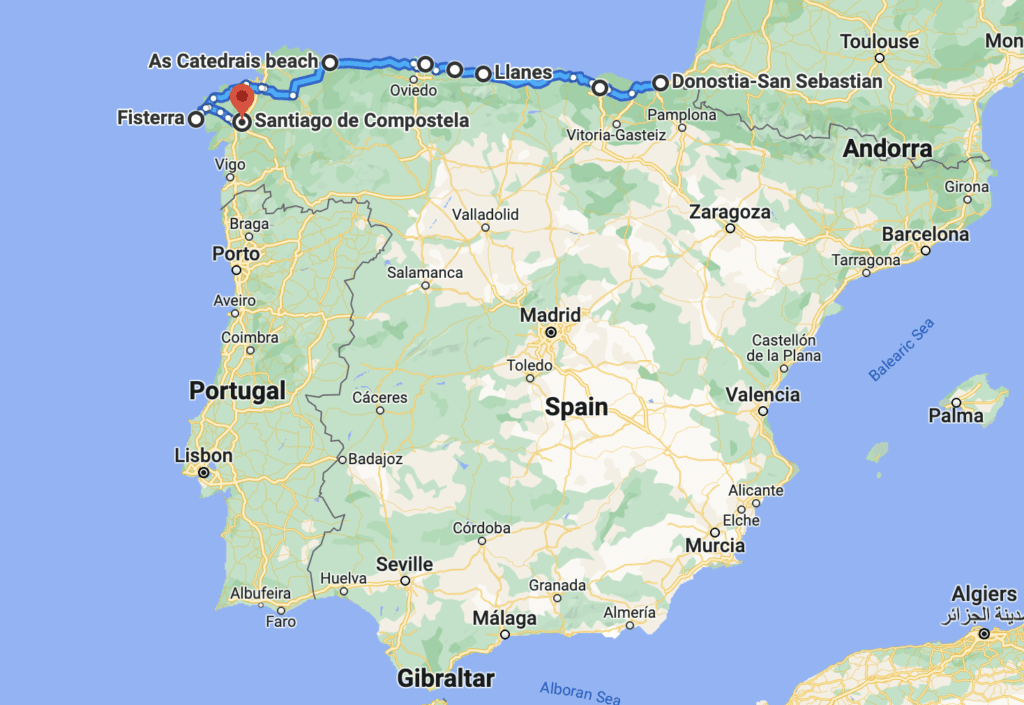
Unique Places I ❤️ In Northern Spain
Beyond the major cities of San Sebastian, Bilbao, Gijon and Santiago de Compostela, which are all amazing, here are my favorite little places to visit on this northern Spain road trip.
✅ Gaztelugatxeko
Gaztelugatxe is not a town but a small islet on the coast of Biscay in the Basque Country, Spain, about 30 minutes from Bilbao. The islet is connected to the mainland by a man-made bridge, which leads to a narrow path with over 240 steps.
It’s best known for being the hermitage of Saint John the Baptiste de Gaztelugatxe. This place has gained international fame, especially after being featured in Game of Thrones as the fictional Dragonstone.
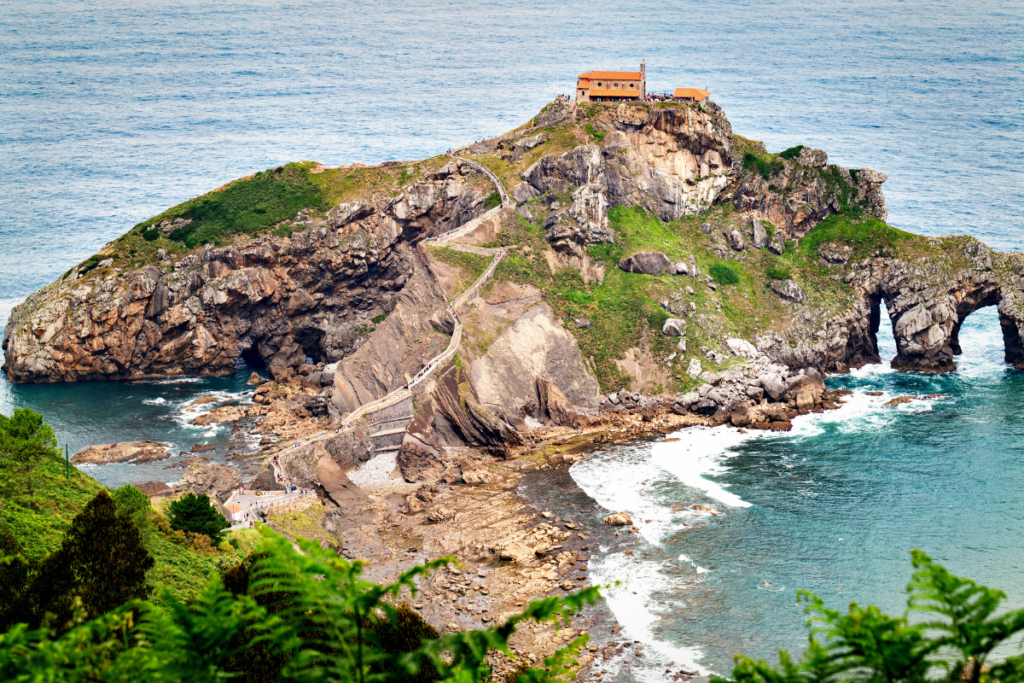
✅ Town of Llanes
Llanes is an ideal destination for people looking for a blend of beach time, hiking the Picos de Europa, and a fish-forward foodie scene. It’s a small town, but the combo of natural beauty and traditional Asturian charm makes it a memorable stop in northern Spain.
✅ Guggenheim Museum
The Guggenheim Museum in Bilbao is an iconic symbol of modern and contemporary art. It’s one of those museums you should visit once in your lifetime, similar to the Prado in Madrid and the Louvre in Paris.
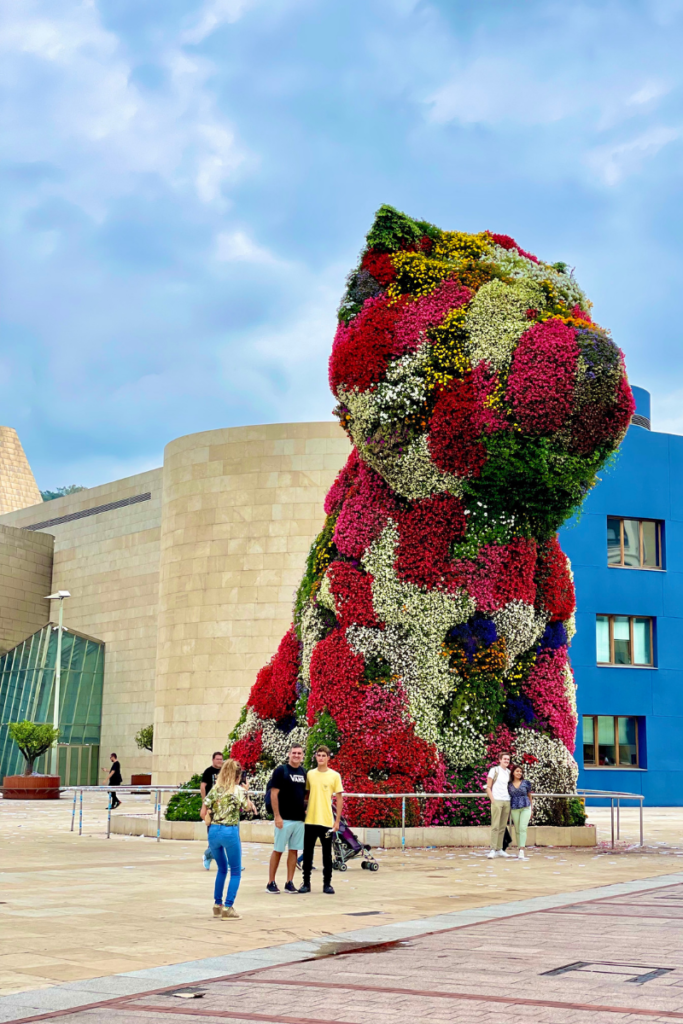
My Favorite Thing: Outside the museum stands one of its most famous installations, “Puppy” by Jeff Koons, a gigantic floral sculpture of a West Highland Terrier, showcasing a living, organic artwork contrasting with the metallic facade of the museum.
Designed by Frank Gehry, the museum is a masterpiece of 20th-century architecture. Not only that, but it has played a pivotal role in the transformation and revitalization of Bilbao from an industrial city into a cultural hub. It houses an impressive collection of thought-provoking modern and contemporary art, and its exhibitions are constantly evolving.
✅ Picos de Europa Mountains
The Picos de Europa mountains, located in Northern Spain, are a part of the Cantabrian Mountains. The highest peak is Torre de Cerredo, standing at 2,650 meters (8,690 feet). It’s a popular destination for hikers and there are plenty of day hikes to go on.
- Ruta del Cares (Hard, 13 miles): Known as the “Divine Gorge,” this trail is one of the most popular hikes, offering stunning views of the gorges (a shorter, easier alternative).
- Lagos de Covadonga (Hard, 10 miles): This hike includes the famous glacial lakes of Enol and Ercina and offers spectacular mountain views.
- Fuente Dé – Cable Car and Hike (Hard, 4.6 miles): Take the cable car up and hike around the upper parts of the mountains for breathtaking views.
✅ Playa de las Catedrales
Playa de las Catedrales is one of the most spectacular natural wonders in Galicia. The beach is renowned for its massive rock arches and caves, which can be seen and explored at low tide. These formations resemble the flying buttresses of Gothic cathedrals, giving the beach its name. I think the beach provides an interesting glimpse into the power of the sea and what erosion and tides can show you.
PRO TIP: It’s crucial to check the tide schedule before planning your visit. The times for low tide change daily, so it’s important to align your visit accordingly. Also, wear water shoes when you visit, lots of slippery rocks.
During peak times, a free ticketing system is in place to protect the beach from overcrowding. You can reserve these online through the official website of the Xunta de Galicia.
Where To Stay in Northern Spain
Following the weeklong Northern Spain road trip, here is where I stayed each night, with hotel recommendations I loved.
Bilbao [2 nights]
From Bilbao, I made a day trip to San Sebastian, which is 1.5 hours away. I opted to drive back to Bilbao because it was more cost-effective, and I liked the grungy vibe in Bilbao better.
📍 Luxury: Vincci Consulado de Bilbao – View of the Guggenheim Museum, a fantastic hotel with great services, breakfast, and breakfast.
📍 Mid-Range: Bilder Boutique Hotel – Charming and modern hotel in Old Town Bilbao, great value and service.
Llanes [2 nights]
This was my home base in the Asturias region, opting for one day of beach hopping in Llanes and one day of hiking the Picos de Europa Mountains.
📍 Luxury: Hotel Rural La Lluriga – A country estate, this family-run, cozy hotel is an amazing little nature escape, with a pool, gardens, 100-year-old trees, a reading room, and a fireplace. Great home base for exploring the region.
📍 Mid-Range: Don Paco – Right in the heart of town, this hotel is actually a restored convent. Think high vaulted ceilings, exposed brick, and fireplaces with modern furniture and decor.
Gijon [1 night]
To break up the drive from Llanes to Santiago de Compostela, I spent a day in Gijon and took a little cooking class.
📍 Mid-Range & Chic: El Moderne Hotel – great for a night, has a dark masculine modern vibe to it, great price for the amenities and location.
Santiago de Compostela [2 nights]
On the way from Gijon to Santiago de Compostela, I stopped and spent a morning at Playa de Las Catedrales, but because there is not much else around, I kept driving the 2 hours all the way to Santiago and spending the last 2 nights sleeping in the beautiful town.
📍 Chic & Cozy: RoomPEDRA – A super nice little apartment, great for a 2-night stay, 5 minutes walk from the Cathedral. It’s not the usual luxury hotel I recommend, but I really liked how clean and cozy it was, and the fact that it had a kitchen because I was a bit tired of eating all my meals out.
📍 Mid-Range: Hotel Altaïr – cute boutique hotel just outside Casco Viejo (Old Town) so you can actually find parking. Comfy rooms, beds, and all the exposed brick you can get.
Getting Around Northern Spain
This route can be done by either renting a car or sorting out the public transportation – busses and trains – from city to city. I recommend renting a car and doing this as a road trip.
This is what I personally use to check prices:
Discover Cars: Rental for Northern Spain Road Trip
The public transportation and Uber in Spain, especially up north in the more rural areas of this road trip are not great (or existent).
Where should I start my road trip?
I recommend starting in Bilbao or San Sebastian and renting a car to take you along the road trip to Santiago de Compostela. From here, you can either take half a day to drive back or return the car in Santiago de Compostela and fly back home.
There is a small fee that rental car companies impose if you rent in one city and return it in another, but it should not be much because you’re in the same country.
Is Driving in Northern Spain easy?
Yes, it is. Not only are the roads in good condition, but the northern Spain road trip has you driving along the rocky coastline for a few hours every couple of days.
For the longer drives from Gijon to Playa de las Catedrales, here are a few unique ways to pass the time – from road trip games to documenting your trip for friends and family!
Budgeting For A Northern Spain Road Trip
General costs depend on the time of year you go. I went in September and the weather was gorgeous, still good for the beaches and hiking, and a little past the high summer season. That said, here are some numbers and tips for you.
TOTAL COST: ~€1,200 for a weeklong road trip.
- Car Rental: $100/week
- Hotels: $60-90/night
- Food: $30-50 a day per person
- Wine: About $2 for a glass of amazing Rioja wine (and Spaniards have a very generous pour!)
FAQ: Northern Spain Road Trip
Here are a few frequently asked questions about going on this road trip.
Is Northern Spain worth visiting?
Firstly, this region is fairly inexpensive and scenically gorgeous – you’ll have the sea on your right and the mountains on your left as you make your way west along the coast. Best of all, cell reception is spotty (nightmare for some, heaven for others), but it forces an unplug from a hectic world, which I truly appreciate.
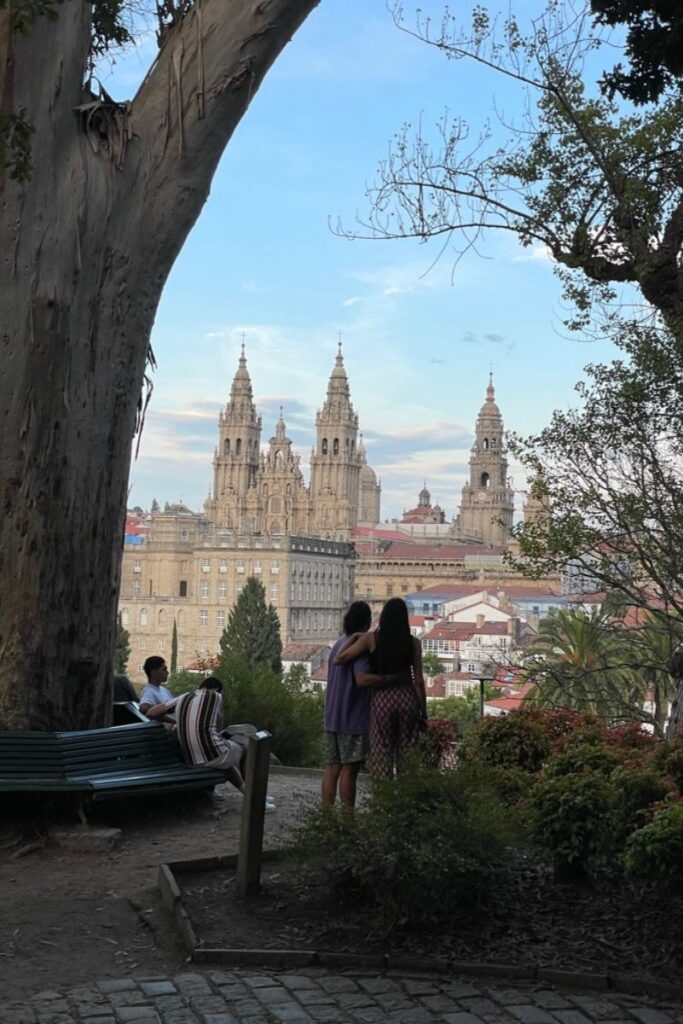
And secondly, you’ll be driving, hiking, and eating along the 1,000-year-old pilgrimage route to the shrine of St. James in Santiago de Compostela. This is known as the Way of St. James or the Camino de Santiago in Spanish.
Over 200,000 pilgrims (people like you and me) travel to the city each year from various starting points all over Europe. I would love to do this walk one day for many reasons – health, inner peace, being one with nature, be one with myself.
All in all, Northern Spain is more than just Barcelona and San Sebastian. Be brave, and come see for yourself!
When Is The Best Time to Visit Northern Spain?
The best times for hiking, beach days, and generally sunniness will be in the summer or fall seasons. I went in September and the weather was a little chilly at night but sunny and warm during the day.
How Many Days Do I Need To Visit Northern Spain?
To really give it a solid go, from San Sebastian to Santiago de Compostela, I recommend a minimum of 1 week. You can follow the 7-day itinerary of my road trip through Northern Spain above. I spent 3 weeks altogether doing this same route, spending 3x the time in each place, and I still felt like there were things I was missing.
Do I Need Travel Insurance For This Trip?
If you’re traveling outside of your home country, and especially if you’re out there hiking and adventuring, I recommend getting some travel insurance for the duration of your stay.
SAFETYWING: Nomad Travel Insurance
Travel medical insurance with SafetyWing is my favorite because it’s flexible, less expensive than the other big insurance companies at ~$40 a month worldwide, and it covers COVID-19 quarantine situations. Here’s the link so you can look into it.
What should I pack for this road trip?
This northern Spain road trip is about a few nights out in towns like San Sebastian and Bilbao (where people dress nice), beach life, a day of hiking the Picos de Europa and visiting the famous Santiago de Compostela church. A lot to pack for, but here’s my packing list beyond the basics like toothbrush and passport:
- Backpack: A comfortable daypack for hiking and city exploring.
- Casual Outfits: T-shirts, tank tops, and comfortable shirts for the daytime.
- Nicer Outfit: A couple of dressier outfits for nights out in San Sebastian and Bilbao. Think smart-casual – a nice dress or blouse and skirt for ladies, and chinos with a polo or button-up shirt for men.
- Swimsuit: At least 1 swimsuit, cover-up, and one pair of flip-flops, a compact and quick-drying towel
- Hiking Gear: A pair of good hiking pants and a lightweight, long-sleeved shirt to protect against the sun and brush. I hiked in my sneakers and opted to leave the hiking boots at home.
- Types of Shoes: Comfortable walking shoes like sneakers (that you can do a day hike in the mountains in), one pair of flip-flops, and a pair of nicer shoes for evenings (I did opt for a low heel and it was ok).
- Light Jacket: A lightweight, waterproof jacket for unpredictable weather, especially in the mountains and coastal areas. Sometimes at night, even in the summer, there’s a chill in the air.
- Accessories: Sunglasses, a hat or cap for sun protection, and a lightweight scarf for cooler evenings.
- Travel Adapters: If you’re coming from outside Europe.
👉 PRO TIP: Pack light, because you’ll be moving your luggage frequently on the road trip. Opt for a carry-on suitcase or backpack that’s easy to handle.
Final Thoughts: Northern Spain Road Trip
I loved road-tripping through Northern Spain. I spent 3 weeks going from San Sebastian to Santiago de Compostela, and have put together a maximized 7-day Northern Spain itinerary that hits all the good spots.
- 2 Days: Basque Country – Bilbao – Guggenheim Museum – Gaztelugatxeko – San Sebastian
- 2 Days: Asturias – Picos de Europa Hikes – Town of Llanes – Gijon
- 3 Days: Galicia – Playa de las Catedrales – Santiago De Compostela
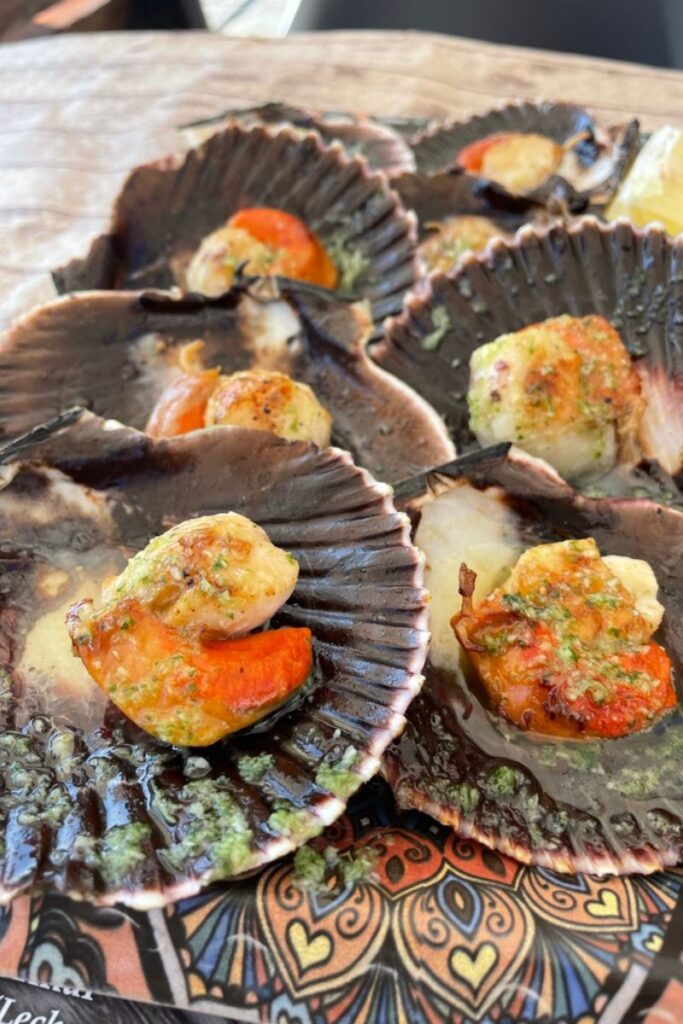
This road trip also highlights some of the churches and cities famous for their history and food. Speaking of, most of this road trip is an adventure into the world of pintxos, riojas, and ciders of the Basque and Galician regions. So if this is your vibe, take the trip!
